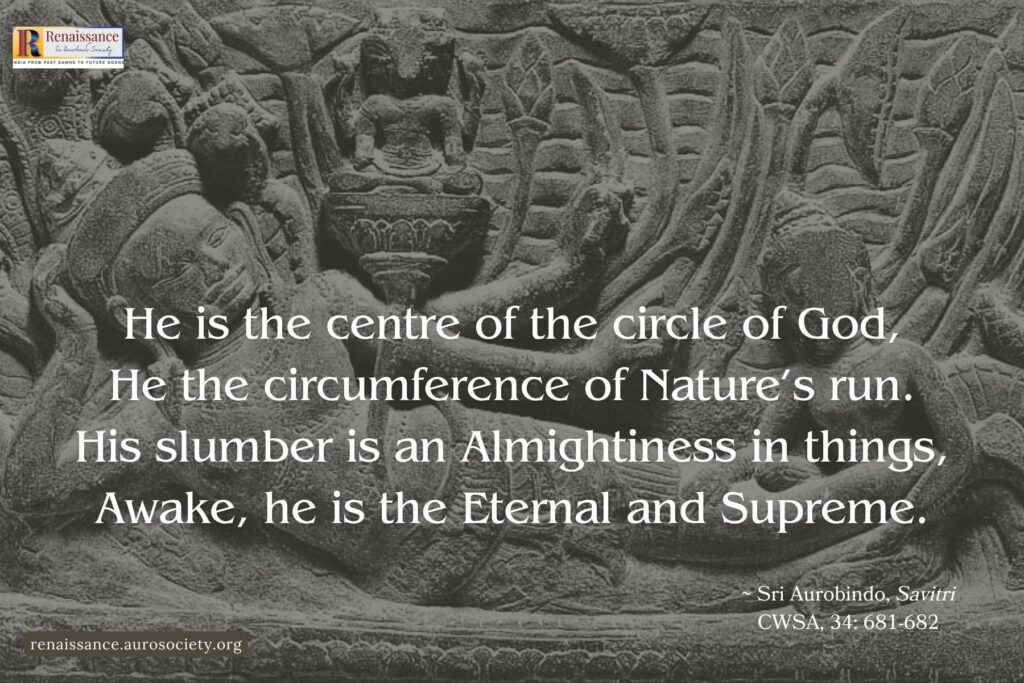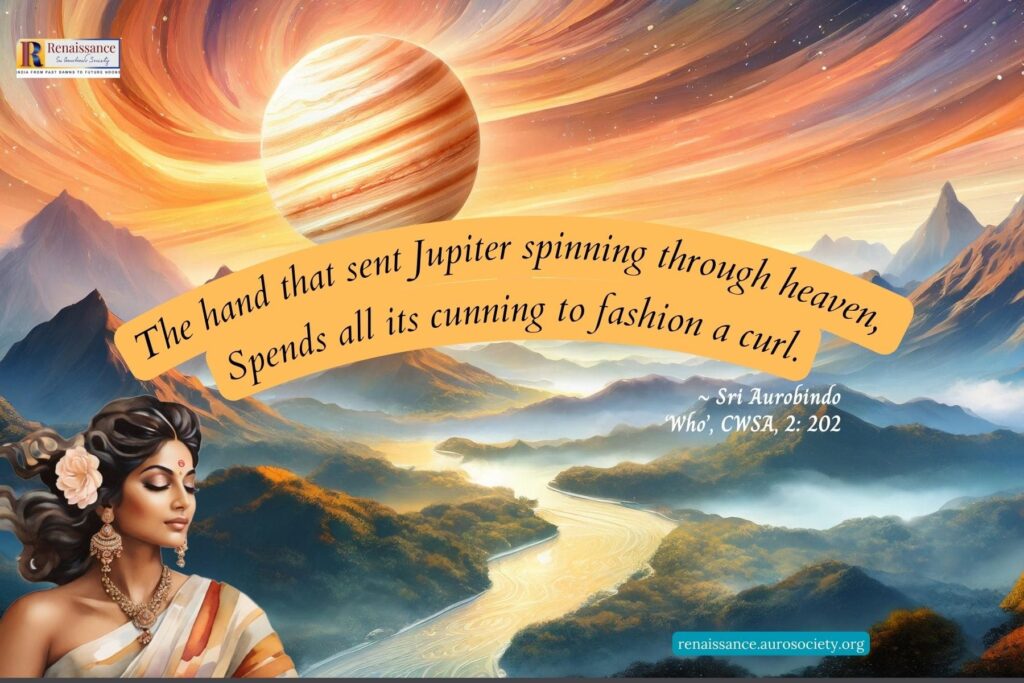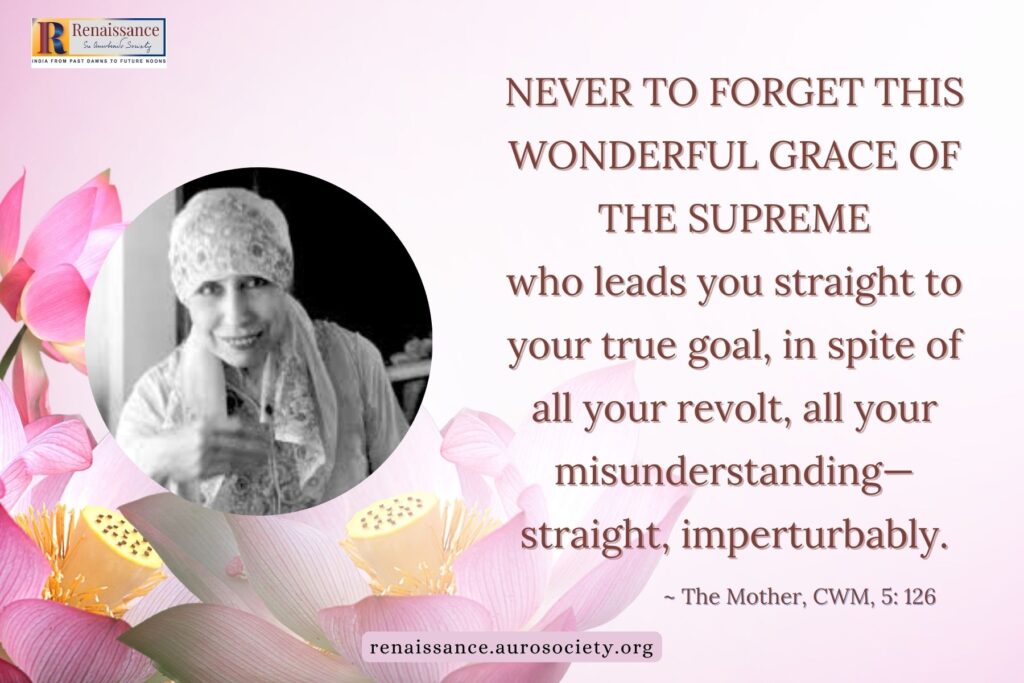“Let the splendour of Bharat’s past be reborn in the realisation of her imminent future with the help and blessings of her living soul.” (The Mother, CWM, Vol. 13, p. 352)
We are happy to launch Renaissance, our new monthly e-journal on this special day of February 21, 2019 – the 141st birthday of the Mother.
Renaissance in India – the theme of this journal takes its inspiration, guidance and significance from Sri Aurobindo’s vision for the future of India and her role in the world. We find that vision resonating in the opening words of the message he gave to the nation and the world on August 15, 1947, in which he had spoken of his ‘five dreams‘:
“August 15th is the birthday of free India. It marks for her the end of an old era, the beginning of a new age. But it has a significance not only for us, but for Asia and the whole world; for it signifies the entry into the comity of nations of a new power with untold potentialities which has a great part to play in determining the political, social, cultural and spiritual future of humanity.” (CWSA, Vol. 36, p. 474)
***
India’s rebirth, her imminent renaissance is significant not only for her future but the future of the world, because it is India alone which can show the humanity a path to a newer, a greater, a deeper and a higher way of being – being in harmony with nature and with one another, with the world around and with the world within.
But before India is able to lead the world, her children must be first re-awakened to the true spirit and sense of her being, her true nature. We, Indians, must rise up to fully grasp and realise the truth about what India is in her soul.
“India is the Bharata Shakti, the living energy of a great spiritual conception, and fidelity to it is the very principle of her existence. For by its virtue alone she has been one of the immortal nations; this alone has been the secret of her amazing persistence and perpetual force of survival and revival.” (CWSA, Vol. 20, p. 57)
Only then we will be able to grasp what forms would a true Indian renaissance take.
We must continue to study the numerous forms that Indian spirit took through her long march over millennia. We must become aware of her strengths that helped her survive, thrive and revive herself. And we must also be fully cognizant of the causes that led to her decline, and the challenges and limitations that may yet impede her path to a new rebirth. All this study and exploration must be done with an eye toward the future, with an aim to create new forms and rhythms of life, to find new expressions in arts and culture, to bring forth a new harmony for the new India that is yet to be born.
“The present is only a last deposit of the past at a time of ebb; it has no doubt also to be the starting-point of the future, but in this present all that was in India’s past is still dormant, it is not destroyed; it is waiting there to assume new forms.” (CWSA, Vol. 20, p. 12)
Every issue of Renaissance will include one or more feature essays or articles. At least one of these will be drawn from the vast archives of Sri Aurobindo Circle, an annual journal published by Sri Aurobindo Society from 1945 to 1998. We will also feature new voices on relevant topics, for which we invite interested writers to contribute to Renaissance. Every issue of the journal will also carry specially selected inspiration from the vast writings and talks of Sri Aurobindo and the Mother. These are our Guiding Lights.
***
Today, when we speak of India as a nation we are also speaking of a ‘form’ that has been evolving over time. What were some of the earlier forms of nation that India experimented with in her civilisational march? How did those forms evolve? What were the unique characteristics, strengths and weaknesses of those forms?
We turn our attention to these and other related questions with the help of our feature essay by Sisirkumar Mitra. We present two parts of this essay in this inaugural issue, the remaining parts will be featured in the subsequent issues of Renaissance with each part elaborating on specific sub-themes.
The feature essay for this issue – Ancient Indian Polity and the Task Ahead – while giving us a good overview of the incomparable Indian political genius, reminds us once again:
“…spirituality is India’s only politics, the fulfilment of the Sanatan Dharma its only Swaraj” (CWSA, Vol. 36, p. 170)
This inaugural issue also features a brief report of a special lecture by Kundan Singh, titled – Sri Aurobindo and the Renaissance in India.
India, as we also know, is a civilisational nation and to see and know India only from the point of view of a modern nation-state is to see and know only the outer surface. Today, as India goes through a deeply significant transition in the process of her rediscovery of her own way, a deeper way of being, it is critical that Indians must know India from a deeper vantage point. This means we have to know something about Indian culture, the culture that Sri Aurobindo defined as an expression of the consciousness of life of India.
What is the nature of the renaissance that this cultural and civilisational India is going through? What does it mean for the future of India and the world? What are the challenges along the way? And how is Sri Aurobindo one of the key forces behind or leading this renaissance? These and several other questions were addressed in this lecture.
***
As we launch this inaugural issue, we remember the Mother’s advice that it is by being sincere, courageous, enduring and honest that we can best serve our country. In all our sincerity and with a spirit of gratitude we offer this work at the feet of Sri Aurobindo and the Mother.
We hope our readers will find this journal inspiring and uplifting. We look forward to comments, reactions and suggestions.
Warm wishes,
Beloo Mehra (for Renaissance Editorial Team)
Wish to write for the journal? Click here.
Cover Image: Sesbania grandiflora (Common names: Scarlet wisteria tree, Vegetable humming-bird). Spiritual significance of the flower as given by the Mother: Beginning of Realisation – Full of promise and hope, it radiates joy and confidence. (Image source)



